
HOME
INTRO
SYMBOLS
ALMANAC
ECONOMY
GEOGRAPHY
STATE MAPS
PEOPLE
FORUM
NEWS
COOL SCHOOLS
STATE QUIZ
STATE LINKS
BOOK STORE
MARKETPLACE
GUESTBOOK
CONTACT US


You may double left-click on a word on this page to retrieve its definition. Tweet Follow
Pennsylvania State Tree
In 1927, an effort, initiated at Pennsylvania State College, was made to get the Pennsylvania General Assembly to adopt the tulip tree (Liriodendron tulipifera L.) and the its flower as the state's official state tree and flower respectively. The prepared arguments read:
WHEREAS, The tulip tree (Liriodendron tulipifera) of the Magnolia Family is a native tree of Pennsylvania and found throughout the State as a forest and cultivated shade tree, and
WHEREAS, It is an important timber tree of the State, its wood being used in cabinet work, interior finish, boat building, wooden pumps, wooden bowls, and as a substitute for Cuban Cedar in the manufacture of cigar boxes, and
WHEREAS, Its beautiful tulip-like flowers, buds, leaves and fruits are easily conventionalized for artistic use and suitable for decorative purposes, and
WHEREAS, The leaf resembles a keystone in shape and is, therefore, a fitting emblem and symbol for the Keystone State, the arch in the thirteen original colonies, and
WHEREAS, It is found in full bloom the latter part of May when we wish to commemorate with floral emblems the brave deeds of our soldiers of the Civil, Spanish-American, and Great World Wars, and
WHEREAS, It has been selected by an overwhelming plurality vote of approximately forty societies in the State, that are interested in securing a flower to represent the Commonwealth of Pennsylvania,
THEREFORE, Be it recommended that the flower of the tulip tree and the tree (Liriodendron tulipifera L.) be adopted by choice as the State flower and State tree of Pennsylvania, and that the citizens of the State and the children of the public schools be instructed to call the flower of the tulip tree the State flower and the tree the State tree of Pennsylvania, and that they shall be taught the identifying characters of the tree and flower and the correct methods of planting and caring for the same in private and public grounds and along our highways.
The thrust of the effort seemed to focus on the aesthetic of the tulip tree and it's flower, with an emphasis that favored the flower rather than the tree. This effort failed to make an impression on members of the Pennsylvania General Assembly and faded into history.
The tulip tree's rejection was probably due to Pennsylvania's reputation as a lumber state which was based on its great tracts of white pine and hemlock. From 1860 to 1870, Pennsylvania led the country in the production of lumber. The tulip tree just didn't fit the economic profile. It was also relatively rare in the northern part of the state.
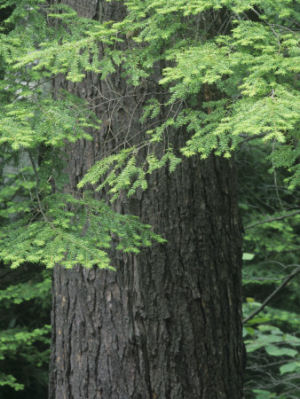
Pennsylvania State Tree
Photographs
Fast forward to 1931 when a completely different story unfolded.
Pennsylvania State Representative Alexander R. Wheeler (Major Wheeler), of Endeavor, introduced a bill to designate the hemlock the official state tree of the Commonwealth of Pennsylvania. His bill placed more emphasis on the legacy of the hemlock in the state.
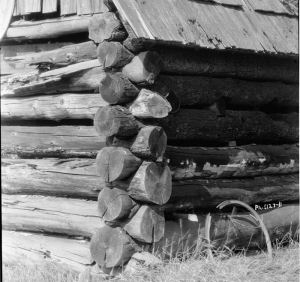
Credit: U.S. Library of Congress
When settlers arrived in the area, now organized as the Commonwealth of Pennsylvania, the area was almost completely forested. Except for Native American settlements and, of course, the lakes and rivers, a grand blanket of conifer and deciduous hardwood occupied the land.
The forest provided the logs to build shelter for early pioneers, provided fuel for warmth in the winter, and they provided the material to build household furnishings, wagons, sledges, plows, and bridges.
The forest also provided sustenance to the settlers in the form of nuts and berries and the wildlife that it supported.
As settlers poured into the area, industry, based on forest products, grew and grew. Lumber was the cash crop of Pennsylvania and, in 1899, it was reported that two thirds of this cash crop was hemlock.
The tall, straight white pine trees that grew along the river banks and on the Allegheny Plateau were in great demand for Clipper ship masts and spars from the 1840s to the 1850s.
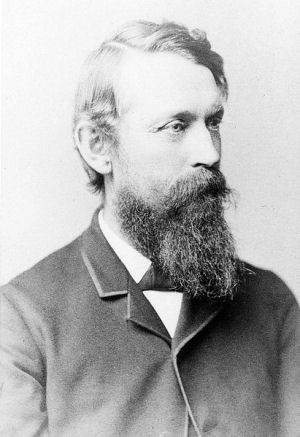
Dr. Joseph Trimble Rothrock
In the 1880s the leather tanning industry, drawn by the abundance of hemlock, moved into Pennsylvania. Hemlock bark, plentiful, provided a rich source of tannins the industry required. It was reported that the United States Leather company controlled two thirds of the hemlock resource within the state.
As one might expect, all of the economic gains from production of lumber to harvesting for tannins took its toll on the forests of Pennsylvania.
Doctor of medicine, botanist, environmentalist and conservationist Dr. Joseph Trimble Rothrock  became the first president of the Pennsylvania Forestry Association, whose mission was to promote conservation and support the creation of parks and forests within the state. In 1901, he was appointed to the position of Commissioner of Forestry and spear-headed efforts to create state forests in Pennsylvania from land purchased from lumber companies.
became the first president of the Pennsylvania Forestry Association, whose mission was to promote conservation and support the creation of parks and forests within the state. In 1901, he was appointed to the position of Commissioner of Forestry and spear-headed efforts to create state forests in Pennsylvania from land purchased from lumber companies.
Dr.Rothrock earned the title "Father of Pennsylvania Forestry" and, in 1896, wrote, "If Pennsylvanians were to select one tree as characteristic of our state, nothing would be better than hemlock." [1]
Another admirer of the hemlock, landscape designer and horticulturalist A. J. Downing, known as the "Father of Landscape Gardening in America," called the hemlock the most picturesque and beautiful of the world's evergreens.
In 1931, the prophesy of conservationist Joseph Rothrock, the first Chief of the United States Forest Service and current Pennsylvania Governor Gifford Pichot, and Pennsylvania's history of forestry all came to press on the state's General Assembly.
Wheeler's tree bill was approved unanimously in the Pennsylvania House of Representatives and the Senate.
On June 22, 1931, Governor Gifford Pichot signed Wheeler's state tree bill and the hemlock became Pennsylvania's official state tree.
On the same day, Governor Pichot signed legislation making the ruffed grouse the official game bird of the state.
HEMLOCK ADOPTED AS STATE TREE
Act of Jun. 22, 1931, P.L. 661, No. 233 Cl. 71
AN ACT
Declaring and adopting the hemlock (Tsuga Canadensis Linnaeus) as the State tree of Pennsylvania.
Whereas, The hemlock (Tsuga Canadensis Linnaeus) is still today, as it was of old, the tree most typical of the forests of Pennsylvania; and
Whereas, The hemlock yielded to our pioneers the wood from which they wrought their cabin homes; and
Whereas, The hemlock gave its bark to found a mighty industry; and
Whereas, The hemlock everywhere lends kindly shelter and sure haven to the wild things of forests; and
Whereas, The lighted hemlock at Christmas time dazzles the bright eyes of the child with an unguessed hope, and bears to the aged, in its leaves of evergreen, a sign and symbol of faith in immortality; now therefore,
Section 1. Be it enacted, That the hemlock tree (Tsuga Canadensis Linnaeus) be adopted as the State tree of Pennsylvania.
"Selection of the hemlock as the state tree of Pennsylvania will doubtlessly be received with general approval among the forest and nature loving public," said Secretary Lewis E. Staley of the state department of forests and waters. "The part the hemlock plays in adding a distinctive touch to the beauty of our outdoors is inestimable and the prominence of the hemlock in the days when the Keystone state was a leader in the lumber world inspires enduring memories of this important timber tree."
("Hemlock Is Now State Tree of Pennsylvania", 1931)
As mentioned, when it was first settled, most of Pennsylvania was forested. Today, forests cover about 60% of the state.
Hemlock grows naturally in every county of the Commonwealth, but especially in the cooler mountainous regions of the state.
Hemlock is widely used as an ornamental planting around homes and it's also widely planted to beautify parks and other public places.
After the designation, the Pennsylvania Department of Forests and Waters was overwhelmed with questions about where to find the biggest, most magnificent hemlock specimens in the state. Joseph Rothrock had reported a stump that measured four feet, ten inches across. He counted 542 annual growth rings on this stump marking the tree well over 500 years old when felled.
The Department of Forests and Waters had no idea where such a hemlock might be found and no idea how big it might be though, according to the Secretary of the Department Lewis E. Saley, did offer that hemlocks normally reach heights of 60 to 100 feet and diameters of two and three feet were common.
Efforts to answer the public's questions regarding the biggest hemlock in the state led the Department of Forests and Waters to solicit the assistance of citizens across the state, instructing them on proper measurement and reporting protocol. We do not know whether the department found what it was looking for.
Cook Forest State Park, a National Natural Landmark in Cooksburg, is said to possess the "finest stand of tall, aged eastern white pine and eastern hemlock north of the Great Smoky Mountains." [2] The champion Pennsylvania hemlock is reported to be found on the Hefren Run Trail, but check its status before you go looking for it.
The smaller Heart's Content Scenic Area, Allegheny National Forest, is also a good place to see eastern hemlocks.
Pennsylvania Law

Official state tree: Hemlock
Pennsylvania Department of Conservation & Natural Resources
Forestry Archive, Bugwood.org.
The following information was excerpted from The Pennsylvania Statutes, Title 71, Chapter 6, Section 1004.
Title 71 P.S. State Government
I. The Administrative Codes and Related Provisions
Chapter 6. Provisions Similar or Closely Related to Provisions of the Administrative Code
Secretary and Department of Internal Affairs
State Emblems
§ 1004. State tree; hemlock
The hemlock tree (Tsuga Canadensis Linnaeus) be adopted as the State tree of Pennsylvania.
CREDIT(S)
1931, June 22, P.L. 661, § 1.
HISTORICAL AND STATUTORY NOTES
1990 Main Volume
Preamble:
This act contained the following preamble:
"Whereas, The hemlock (Tsuga Canadensis Linnaeus) is still today, as it was of old, the tree most typical of the forests of Pennsylvania; and
"Whereas, The hemlock yielded to our pioneers the wood from which they wrought their cabin homes; and
"Whereas, The hemlock gave its bark to found a mighty industry; and
"Whereas, The hemlock everywhere lends kindly shelter and sure haven to the wild things of forests; and
"Whereas, The lighted hemlock at Christmas time dazzles the bright eyes of the child with an unguessed hope, and bears to the aged, in its leaves of evergreen, a sign and symbol of faith in immortality."
71 P.S. & 1004, PA ST 71 P.S. & 1004
Sources...
"Foresters Seek Site of Greatest Hemlock." The Lock Haven Express 13 Aug. 1931: 2. Print.
[1] "Hemlock Is Now State Tree of Pennsylvania." The News [Newcastle] 24 June 1931: 11. Print.
"Largest Hemlock in State Sought; Now Is State Tree." The Clearfield Progress 13 Aug. 1931: 8. Print.
[2] Luthringer, Dale. "Old Growth Forests in the Pennsylvania Wilds." The Native Tree Society. The Native Tree Society, n.d. Web. 26 Nov. 2016.
"Pennsylvania Gets State Tree and Bird, Loses Official "Day"" The Bradford Era 23 June 1931, Vol. 54 ed., No. 204 sec.: 1. Print.
Shankle, George Earlie. State Names, Flags, Seals, Songs, Birds, Flowers, and Other Symbols. Irvine, Calif.: Reprint Services Corp, Revised edition, 1971.
Shearer, Benjamin F. and Barbara S. State Names, Seals, Flags and Symbols: A Historical Guide Third Edition, Revised and Expanded. Westport, Conn: Greenwood Press, 3 Sub edition, 2001.
"The Life of Dr. Joseph Trimble Rothrock." Pennsylvania Department of Conservation and Natural Resources. Commonwealth of Pennsylvania, n.d. Web. 25 Nov. 2016.
Thomson Reuters: Westlaw The Pennsylvania Statutes, (Accessed December 14, 2010)
Additional Information
Pennsylvania State Tree: Eastern hemlock (Tsuga canadensis
State Tree of Pennsylvania: Pennsylvania Department of Conservation and Natural Resources.
Who Was Joseph Trimble Rothrock?: The Pennsylvania Forestry Association.
Eastern hemlock (Tsuga canadensis (L.) Carrière): Tree Identification Fact Sheet from the Virginia Tech.
Eastern hemlock (Tsuga canadensis (L.) Carrière): Landowner Fact Sheet from the Virginia Tech.
Plant Profile for Tsuga canadensis (L.) Carrière (eastern hemlock): USDA, NRCS. 2004. The PLANTS Database, Version 3.5 (http://plants.usda.gov). National Plant Data Center, Baton Rouge, LA 70874-4490 USA.
Tsuga canadensis (L.) Carrière (eastern hemlock): United States Department of Agriculture: Forest Service: Agriculture Handbook 654: Silvics of North America.
CalPhotos Photo Database: Photographs of Tsuga canadensis from CalPhotos, a project of the Biodiversity Sciences Technology group (BSCIT), part of the Berkeley Natural History Museums at UC, Berkley.
Tsuga canadensis: Search for images of Tsuga canadensis with Google.
The Pennsylvania Forest History
State trees: Complete list of official state trees from NETSTATE.COM.
More symbols & emblems: Complete list of official Pennsylvania state symbols from NETSTATE.COM.
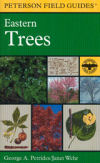
A Field Guide to
Eastern Trees
George A. Petrides
A Field Guide to Eastern Trees (Peterson Field Guides):
by George A. Petrides, Janet Wehr (Illustrator), Roger Tory Peterson (Series Editor), Houghton Mifflin; 2 edition (July 15, 1998)
This field guide features detailed descriptions of 455 species of trees native to eastern North America, including the Midwest and the South. The 48 color plates, 11 black-and-white plates, and 26 text drawings show distinctive details needed for identification. Color photographs and 266 color range maps accompany the species descriptions.
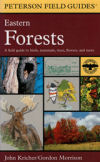
A Field Guide to
Eastern Forests
John C. Kricher
A Field Guide to Eastern Forests : North America (Peterson Field Guides):
by John C. Kricher (Photographer), Gordon Morrison (Illustrator), Roger Tory Peterson (Series Editor), Houghton Mifflin (October 15, 1998)
This field guide includes all the flora and fauna you're most likely to see in the forests of eastern North America. With 53 full-color plates and 80 color photos illustrating trees, birds, mammals, wildflowers, mushrooms, reptiles, amphibians, butterflies, moths, beetles, and other insects.
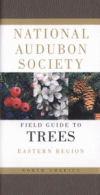
North American Trees
Eastern Region
National Audubon Society Field Guide to North American Trees : Eastern Region:
by Elbert Luther Little. Knopf; Chanticleer Press ed edition (May 12, 1980)
Nearly 700 species of trees are detailed in photographs of leaf shape, bark, flowers, fruit, and fall leaves -- all can be quickly accessed making this the ideal field guide for any time of year. Note: the Eastern Edition generally covers states east of the Rocky Mountains, while the Western Edition covers the Rocky Mountain range and all the states to the west of it.
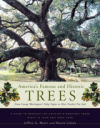
America's Famous
and Historic Trees
Jeffrey G. Meyer
America's Famous and Historic Trees: From George Washington's Tulip Poplar to Elvis Presley's Pin Oak (Hardcover)
by Jeffrey G. Meyer. 130 pages. Houghton Mifflin Harcourt; First Edition (April 20, 2001)
America's Famous and Historic Trees tells the stories of various trees that Meyer and his cohorts rescued or propagated: oftentimes, when trees were going to be cut down, he and his workers headed off the bulldozers, rescuing the tree with their massive tree hoe. Other trees--like the Indian Marker Pecan in southeast Dallas--were propagated before they died.

Trees
National Champions
Barbara Bosworth
Trees : National Champions (Hardcover)
by Barbara Bosworth. 144 pages. The MIT Press; First Edition (August 19, 2005)
Bosworth captures the ineffable grace and dignity of trees with clarity and directness: the green ash that shades a Midwestern crossroads, the common pear that blooms in a Washington field, and the Florida strangler fig with its mass of entwining aerial roots.
Her black and white photographs, panoramic views taken with an 8 x 10 camera, show the immensity of the largest species and the hidden triumphs of the smallest
Plants, Seeds & Flowers:
Bulbs, seeds, plants, fertilizer, plant containers and more.
Gardening Tools:
Pruners, rakes, shovels, hoes, trowels, cultivators and tillers, greenhouses, yard carts and more.

